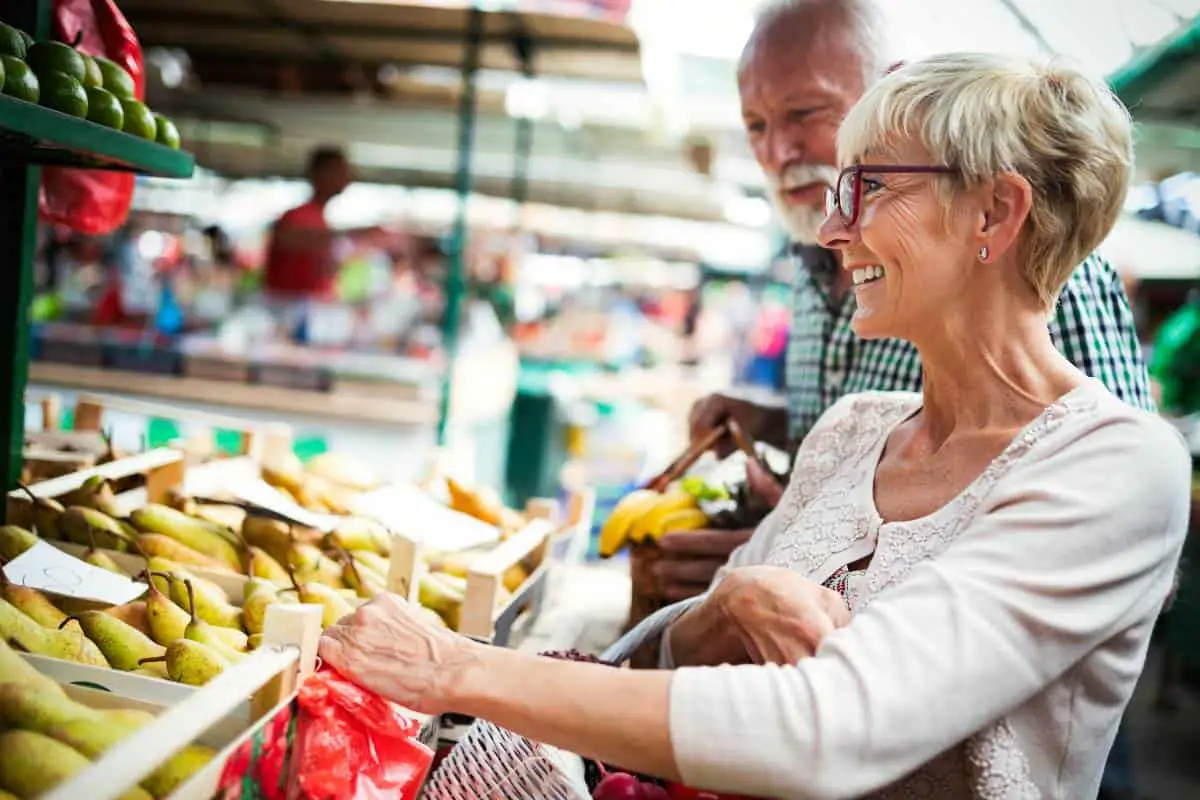A Balanced Diet Thailand For Retirees [Essential!]
Looking to embrace the vibrant flavors of Thailand while keeping your health in check? You’re not alone! After trading my American life for Thailand’s sunny shores, I’ve discovered that staying healthy here is an exciting adventure, not a challenge. From bustling morning markets to peaceful temple communities, Thailand offers incredible options for maintaining a balanced diet. Let me share what I’ve learned about blending traditional Thai wisdom with modern nutrition to help you thrive in the Land of Smiles.
Key Takeaways
- Recent studies show that dietary diversity significantly reduces mortality rates among Thai seniors over 70, particularly in underweight individuals
- By 2031, Thailand’s elderly population will reach 28%, making nutritional health a critical focus
- 70% of Thai consumers actively seek a balanced diet, with 46% recognizing food’s direct impact on health
Table of Contents
Understanding Modern Thai Senior Nutrition
The landscape of aging in Thailand is evolving rapidly. I’ve observed how traditional diets intersect with modern nutritional science. According to the World Health Organization, food security means having “physical, social, and economic access to sufficient, safe, and nutritious food that meets dietary needs and food preferences.” This definition has become increasingly relevant as Thailand transitions into an aging society where nutritional status matters.
Risk Assessment and Monitoring
I recommend using the DETERMINE tool, which I’ve found extremely effective for assessing nutritional risk and identifying which areas need intervention. Here’s what to monitor:
| Factor to Monitor | Why It’s Important |
|---|---|
| Weight Changes | Sudden weight loss or gain can indicate underlying health issues, poor nutrient intake, or medication side effects. Regular weight monitoring helps catch problems early. |
| Eating Patterns | Changes in appetite or eating habits might signal health concerns, depression, or practical challenges with food preparation. Monitoring helps identify barriers to good nutrition. |
| Dental Health | Poor dental health can severely limit food choices and lead to inadequate nutrition. Regular dental checks ensure continued ability to eat a varied diet. |
| Medication Interactions | Some medications can affect appetite or nutrient absorption. Understanding these interactions helps prevent nutritional deficiencies. |
| Social Factors | Isolation, limited income, or lack of transportation can impact food access. Monitoring social circumstances helps identify needed support services. |
Traditional Thai Foods and Modern Nutrition
Thai cuisine naturally aligns with many modern health recommendations. Here’s how traditional elements support senior health and reduce the possibility of having chronic diseases:
Beneficial Local Ingredients
| Category | Ingredient | Health Benefits | Best Uses |
|---|---|---|---|
| Proteins | Fish | Omega-3, lean protein | Steamed, grilled |
| Tofu | Plant protein, calcium | Soups, stir-fries | |
| Legumes | Fiber, protein | Curries, salads | |
| Herbs & Spices | Turmeric | Anti-inflammatory | Curries, drinks |
| Lemongrass | Digestive aid | Soups, teas | |
| Galangal | Antioxidant-rich | Soups, pastes | |
| Vegetables | Morning Glory | Iron, fiber | Stir-fries |
| Bamboo Shoots | Low-calorie, fiber | Soups, curries | |
| Thai Eggplant | Antioxidants | Curries, dips | |
| Fruits | Papaya | Digestive enzymes | Fresh, salads |
| Guava | Vitamin C, fiber | Fresh, juices | |
| Pomelo | Vitamin C, low sugar | Fresh, salads | |
| Healthy Fats | Coconut | MCTs, energy | Curries, drinks |
| Peanuts | Protein, healthy fats | Garnish, sauces | |
| Small Fish | Calcium, omega-3 | Dried, fermented |

Cultural Food Practices and Health
I’ve witnessed how Buddhist dietary practices and Thai food culture naturally promote healthier eating habits among retirees. The Buddhist influence encourages mindful eating and plant-based options, while traditional beliefs align surprisingly well with modern nutritional science. The concept of ‘gap kao’ (with rice) naturally helps with portion control of proteins and vegetables.
What I find most beneficial for retirees is the emphasis on social eating – shared meals during festivals and community gatherings ensure regular eating patterns and diverse nutrient intake. The practice of ‘gan gin gan yu‘ (eating and living together) creates valuable support systems for maintaining healthy habits.
This cultural approach to food, combining mindful eating with social connection, provides an excellent foundation for maintaining good nutrition in retirement.
Practical Diet Planning for Thai Seniors
Based on my experience working with retirees, here’s a comprehensive approach to daily nutrition:
Daily Meal Structure
| Meal Time | Recommended Foods | Nutritional Focus | Tips |
|---|---|---|---|
| Breakfast (7-8 AM) | • Rice congee with soft protein • Fresh seasonal fruit • Herbal tea • Soft-boiled egg | • Easy digestion • Protein intake • Hydration | • Choose softer textures • Avoid very hot foods • Include protein source |
| Mid-Morning (10-11 AM) | • Thai kanom (light snacks) • Fresh coconut water • Steamed banana • Local fruits | • Sustained energy • Hydration • Light nutrition | • Focus on hydration • Choose easily digestible snacks • Avoid heavy foods |
| Lunch (12-1 PM) | • Steamed fish/lean protein • Mixed vegetables • Small portion of rice • Clear soup | • Main protein intake • Vegetable Variety • Balanced nutrients | • largest meal of the day • Include all food groups • Choose fresh ingredients |
| Afternoon (3-4 PM) | • Fresh local fruits • Light protein snack • Herbal drinks • Thai desserts (occasional) | • Blood sugar balance • Light protein • Hydration | • Avoid heavy snacks • Choose cooling foods • Maintain hydration |
| Dinner (6-7 PM) | • Light soup • Steamed vegetables • Small protein portion • Minimal carbohydrates | • Easy digestion • Light protein • Vegetable intake | • Eat at least 3 hours before bed • Choose lighter options • Focus on vegetables |
Special Considerations:
- Adjust portions based on individual needs
- Consider medication timing with meals
- Account for any health conditions
- Monitor spice levels
- Ensure adequate water intake throughout the day
This meal structure is based on my observations of successful eating patterns among retirees in Thailand, combining both traditional Thai wisdom and modern nutritional science. Remember to adapt this schedule to your personal lifestyle and health requirements.
Technology and Modern Solutions
The digital age has brought valuable tools for maintaining healthy eating habits and focusing on food and nutrition:
Digital Resources
Nutrition tracking apps now include comprehensive Thai food databases, while specialized food delivery services cater specifically to seniors’ dietary needs. Online communities have become vibrant spaces where people share and discover traditional recipes with modern twists.
Smart Kitchen Solutions
In the kitchen, smart appliances have made cooking more accessible and convenient. Rice cookers featuring dedicated congee settings help preserve traditional cooking methods while simplifying the process. Food processors ease the preparation of ingredients, particularly beneficial for those with limited mobility. Modern storage solutions are specifically designed to preserve ingredients in tropical climates, extending food freshness despite heat and humidity.

Mental Health and Nutrition Connection
In my experience, the connection between mental well-being and nutrition is crucial to healthy aging as you venture into your golden years:
Managing Emotional Eating Strategies
| Approach | Implementation | Expected Benefits |
|---|---|---|
| Regular Eating Schedule | Set 3 main meals and 2-3 snacks at fixed times | Stabilizes blood sugar, reduces anxiety around food, creates healthy routines |
| Social Eating | Join community meals, eat with family, organize group dinners | Reduces loneliness, adds accountability, makes meals more enjoyable |
| Mindful Eating | Eat without distractions, chew slowly, and appreciate flavors | Improves portion control, enhances digestion, increases meal satisfaction |
Brain-Boosting Thai Ingredients
| Food | Key Nutrients | Traditional Uses |
|---|---|---|
| Turmeric | Curcumin | Added to curries, teas, and medicinal drinks for inflammation reduction |
| Fish | Omega-3, DHA | Steamed with lime, grilled, or used in soups for brain health |
| Green Leafy Vegetables | Folate, Iron | Stir-fried with garlic, added to soups, eaten raw with nam prik |
| Nuts and Seeds | Vitamin E, Zinc | Added to desserts, used in morning porridge, eaten as snacks |
Emergency Preparedness
Living in Thailand has taught me valuable lessons about emergency preparedness, particularly when it comes to maintaining an essential food stockpile. A well-planned pantry should include staples like rice and various dry goods as the foundation of emergency supplies. Canned fish provides a reliable protein source, while shelf-stable milk ensures access to important nutrients. Bottled water is crucial for hydration during emergencies, and traditionally preserved foods like dried fish, pickled vegetables, and fermented products offer both familiar flavors and practical sustenance when fresh options are limited.
Building Community Support
Building and maintaining social connections plays a vital role in supporting good nutrition, particularly for older adults in Thailand. Local senior centers serve as essential hubs where people can gather and share meals, while temple food-sharing programs continue the traditional practice of community support through food. Community gardens provide both fresh produce and meaningful social interaction as participants work together to grow their food. Group cooking classes offer valuable opportunities to learn new skills while fostering friendships and cultural exchange, helping people stay engaged with their community through shared culinary experiences.
FAQs
How can technology help maintain a healthy diet while retiring in Thailand?
Several tools can help Thai-language food delivery apps for fresh ingredients, nutrition tracking apps with local food databases, and smart kitchen appliances designed for senior-friendly cooking. Many of my clients successfully use Line groups to connect with local farmers and food vendors.
What’s a good way to handle restaurant dining when managing health conditions?
I recommend learning key Thai phrases for dietary restrictions, carrying a translated medical diet card, and building relationships with local restaurants. Many establishments are happy to modify dishes for regular customers – I’ve found that morning restaurants (ร้านอาหารเช้า) are particularly accommodating to senior dietary needs.
What’s the best way to maintain food security on a retirement budget in Thailand?
Focus on local seasonal produce, join community buying groups, and learn preservation techniques.
How can I modify spicy Thai dishes for better digestion?
Request reduced chili, use more herbs for flavor, and incorporate cooling ingredients like cucumber.
What are the essential nutrients seniors should focus on in Thailand?
Prioritize protein, calcium, vitamin D, and B12, which can be found in local Thai ingredients.
Conclusion
After years of experiencing Thailand, I’ve learned that maintaining a healthy diet as a retiree is both achievable and enjoyable. The key is balancing traditional wisdom with modern nutritional science while staying connected to the community. The rich culinary heritage of Thailand offers countless opportunities to maintain a nutritious and satisfying diet in your golden years.
Whether you’re planning to retire in Thailand or just looking to learn more about Thai cuisine and culture, we hope this guide has provided valuable insights into maintaining a healthy diet in the Land of Smiles.
If you have any questions about Thai food, local ingredients, or tips for navigating the local food scene, don’t hesitate to message us. We’re here to help you make the most of Thailand’s incredible culinary offerings!






